AROUND THE ISLAND
Things to do
A HIGH NUMBER OF ENDEMIC SPECIES
Wildlife experiences
Like many islands, Sri Lanka boasts a high number of endemic species, animals and plants found nowhere else on Earth. The country is also regarded as one of the world’s top five hotspots for biodiversity, testament to the sheer number of species which call the tear drop isle home.
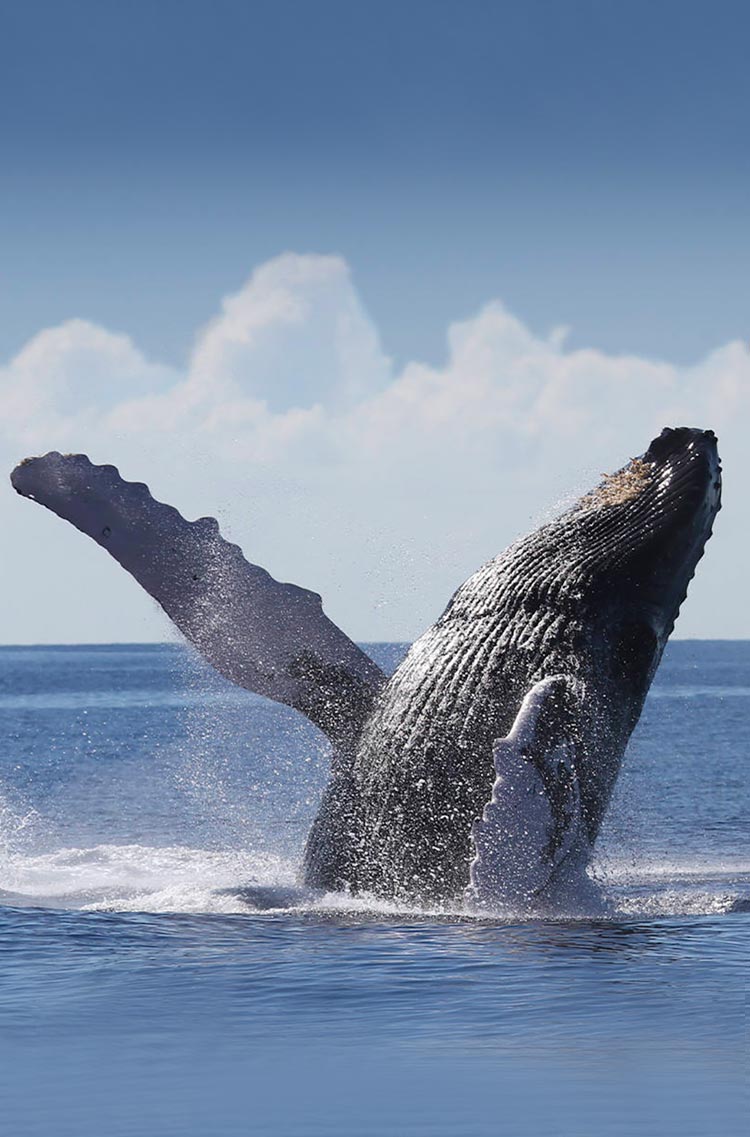
Whale Watching
The king of the ocean and the largest animal on the planet, the blue whale is a rare delight for wildlife enthusiasts and nowhere in the world are they more reliably spotted than in Sri Lanka. Nothing is quite like the shock of seeing the sheer size of these magnificent beasts in the flesh so be sure to plan your trip around whale watching season.
You can spot blue whales off Sri Lanka’s northeast coast near Trincomalee or in the southern waters by Mirissa. Between the months of June and October whale watching is best off Trincomalee, then from November to April the season continues on the south coast in Mirissa.
Turtle Watching
Sri Lanka is globally recognized as one of the few places in the world where you can observe marine turtles in their natural habitat.
Five out of seven of the world’s marine turtle species are found in Sri Lanka and come ashore in Rekawa to lay eggs, including green, loggerhead, hawksbill, olive ridley, and leatherback. Best time to watch is from April to July.
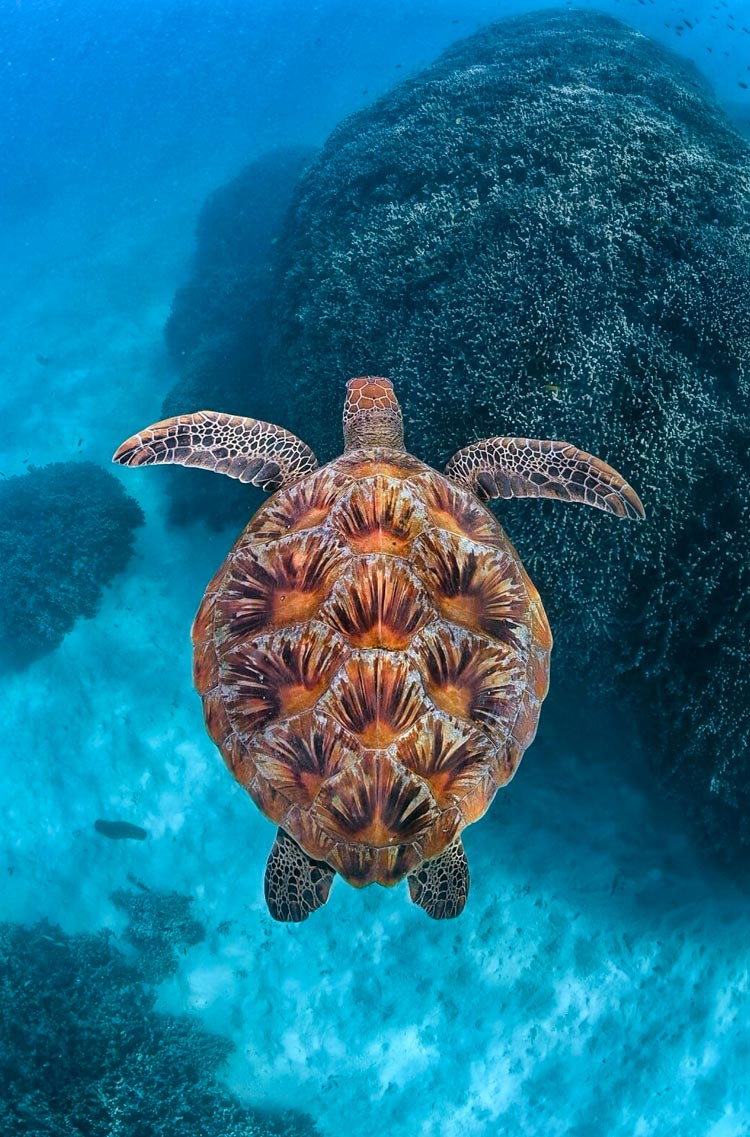
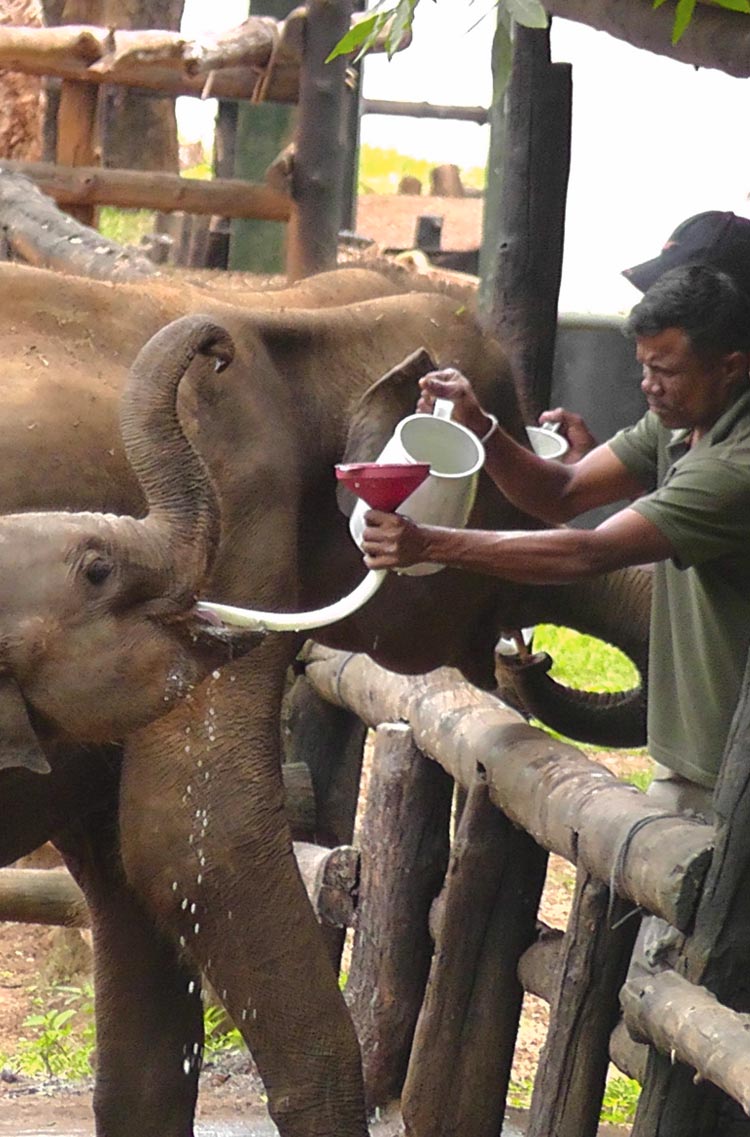
Elephant Transit Home – Udawalawe
The primary purpose of the Elephant Transit Home is to rehabilitate and release isolated baby elephants to the wild. The Ministry of Wildlife Conservation took an essential step in the welfare and protection of orphan elephants in 1995. As a result, “Ath Athuru Sevana” (Elephant Transit Home) was established at the Udawalawe National Park.
Elephant Transit Home (ETH) cares for orphaned elephant calves until they are independent and capable enough to be released back into the wild. There are normally between 40 to 60 orphaned elephants and visitors can watch them being fed, from the safety of a viewing platform about 8m away, at one of the four feeding sessions, held every three hours from 9 am until about 6 pm.
Elephant Freedom Project
(Spend the day with an elephant)
Enjoy an afternoon learning about elephants on this small group experience (max 10 people) at the Elephant Freedom Project in Kegalle, approx. 2 hours drive from Kandy. This fantastic project rescues elephants that were used in the tourism industry and provides them with a safe and protected environment where they can roam freely.
On arrival enjoy a home cooked lunch of rice and curry before you head to the river where the elephants go for a refreshing dip. Watch from the water’s edge or get involved and help their keepers scrub the elephants for a fantastic close up experience with these majestic animals. After a fresh cup of Sri Lankan tea, let the elephants lead you at their own pace on a walk through the local woodland, where you can help feed them or simply watch as they graze.
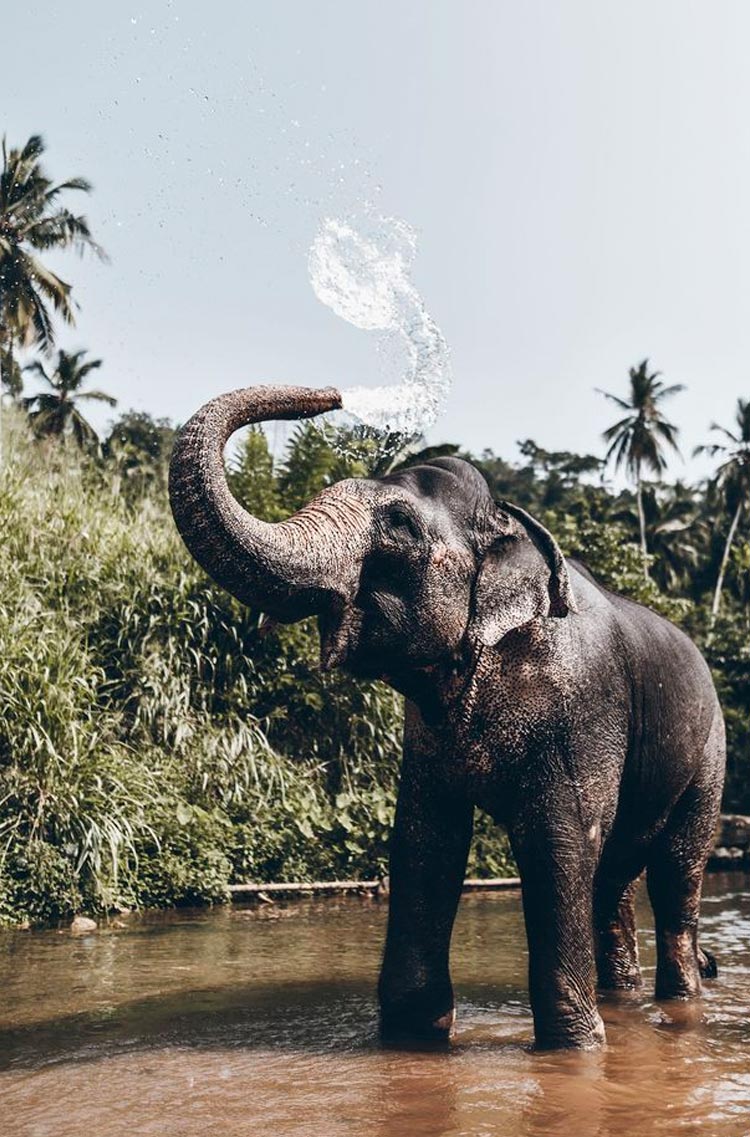
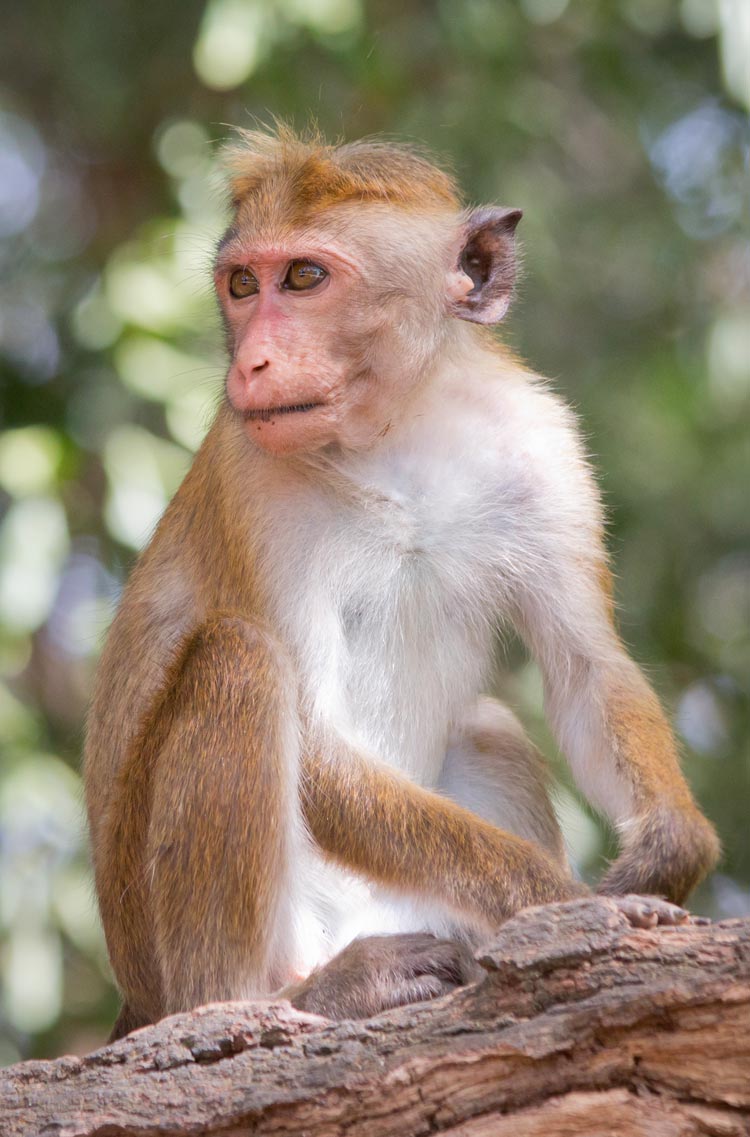
Monkey Kingdom – Polonnaruwa
The island sports a huge diversity of flora and fauna where, even in the most built-up areas, the heartbeat of nature is never far away. Some of the most personable and intriguing creatures you may meet on your travels are Sri Lanka’s monkeys. These fascinating primates have long been a visitor favourite thanks to their inquisitive nature and oh-so-human behaviors.
To learn about how these monkeys interact with each other and their place within the ecology of the island, we highly recommend a visit to the Smithsonian Primate Research Centre. There you will have the opportunity to get up-close and personal with our tree-dwelling cousins.
Based at the ancient ruined city of Polonnaruwa, in Sri Lanka’s Cultural Triangle, the research centre is dedicated to the study of Sri Lanka’s primate species, including the three species of monkey — grey langur, toque macaque and purple-faced leaf monkey — as well as the two loris species, red and grey slender.
Leopards of Sri Lanka
Known as the ‘Lord of the Jungle’, the Sri Lankan Leopard (Panthera parades kotiya) is one of the eight recognized subspecies of Leopard and is indigenous to Sri Lanka. The Sri Lankan Leopard, the smallest of the ‘Big cats’ is still the only large mammal predator in the country and relatively bigger in size than its relatives living elsewhere. They are highly graceful and agile animals are predatory carnivores making them excellent hunters who pursue different prey such as small mammals, birds, reptiles, wild boar, sambur and barking-deer of which the spotted deer makes a larger part of its diet. They hunt mainly during the nights and are best observed during dawn and dusk and sometimes during the daytime as well.
The Sri Lankan Leopard is able to survive in most habitats and is distributed throughout the island both within protected areas and outside the protected. They are most frequently found in the dry zone, evergreen forests, scrub jungle, rainforests and wet zone intermediate forests. The best place for leopard sighting is the Yala National Park, which is known to have the highest recorded densities of leopards in the world and the Wilpattu National Park. Watching leopards in the wild is considered an art that requires lots of patience so as to win the trust of the animal. Since leopards are not favorable to human movement, it is best to keep still and quiet while staying a good distance away. The best period for leopard watching is during the dry seasons which is between May – August in Yala when the animals can be seen quenching their thirst at the waterholes.
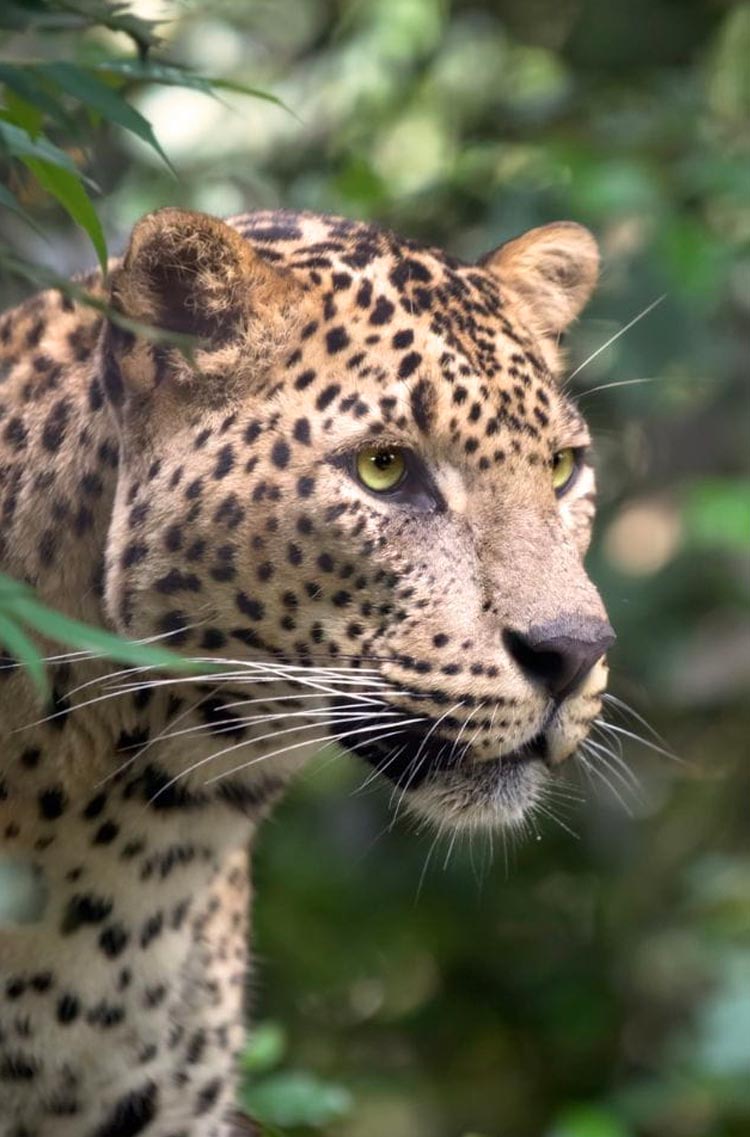
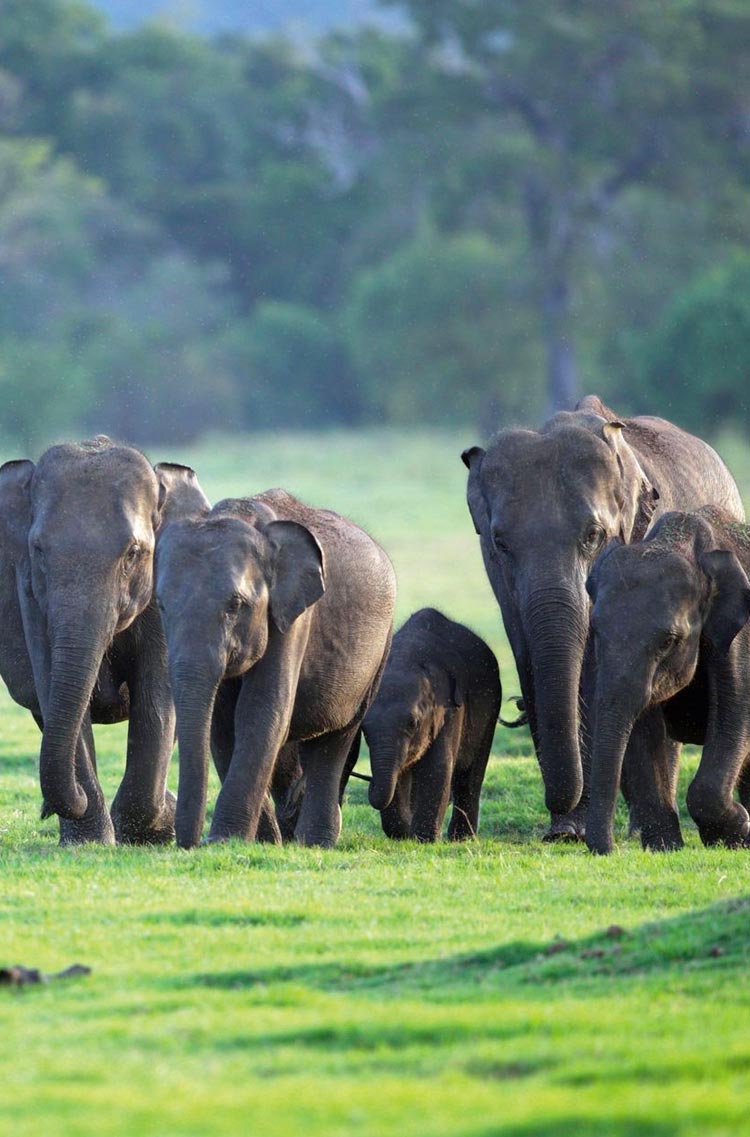
The elephant gathering in Minneriya
The Elephant Gathering in Minneriya National Park, Sri Lanka is one of the world’s most spectacular wildlife phenomenon. Hundreds of Asian elephants converge around the park’s main lake generally between July and October, coinciding with the dry season in Sri Lanka’s North Central & Eastern provinces. The tank is an incredible place to observe elephants that come to bathe and graze on the grasses as well as the huge flocks of birds that come to fish in the shallow waters. Traditionally it was believed that as the available water resources in the area dry up for the large number of wild elephants who live nearby, they naturally converge on an available water supply. A fully grown elephant usually requires about 100 litres of water per day, so access to water is vital to the elephant’s survival. However, recent research has suggested that it is the abundant grasslands around the ‘tanks’ (ancient reservoirs) at Mineneriya and Kandulla, even in the height of the dry season, which make the area so attractive.
What makes this annual event so special is the fact that over 300 wild elephants from different herds congregate in the same spot (a space measuring a mere four square kilometres) at the same time every year. Asian elephants are renowned as highly social animals and the reservoir or tank meetings demonstrate their complex group dynamics in action.
PROMISES AN UNFORGETTABLE EXPERIENCE
Nature walks and hikes
Sri Lanka offers captivating nature walks and hikes. Lipton’s Seat provides stunning tea plantation vistas. Coconut Tree Hill in Mirissa offers breathtaking coastal panoramas. Adam’s Peak, a sacred pilgrimage site, promises an unforgettable sunrise experience. Little Adam’s Peak is an easier trek with picturesque views, perfect for nature enthusiasts.
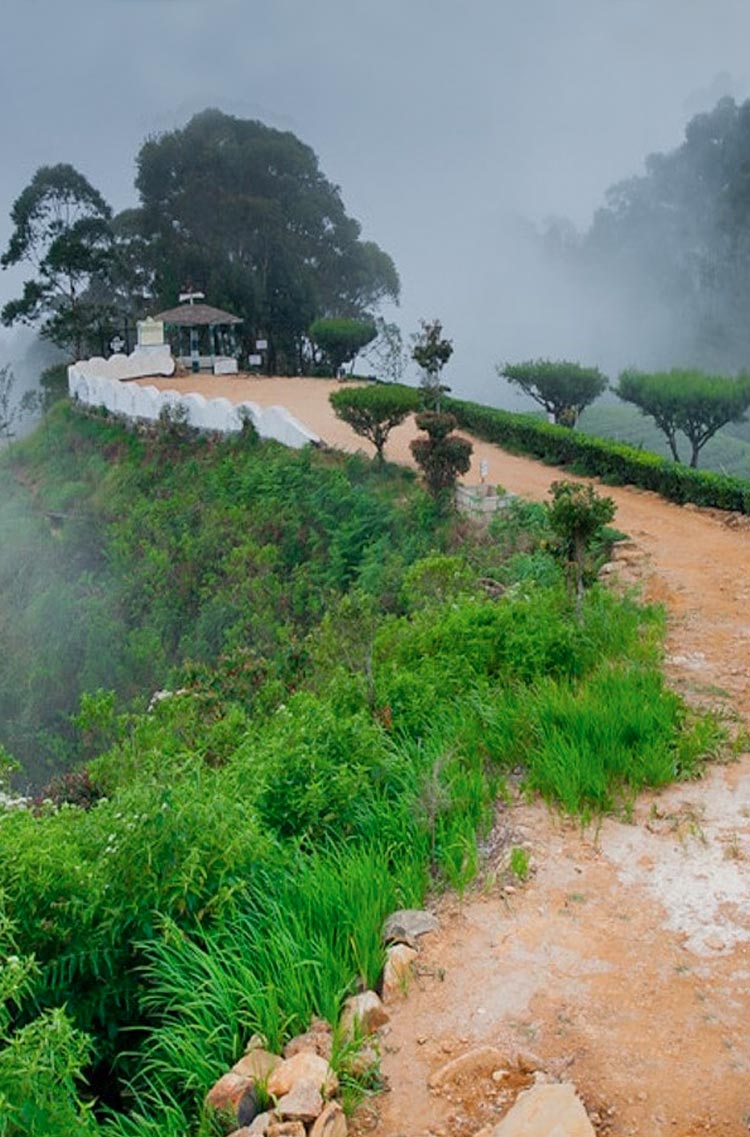
Lipton’s Seat
A Colonial Legacy- Situated an hour away from Haputale town, Lipton’s Seat is a viewpoint named after the celebrated Thomas Lipton. He was a Scottish businessman who moved to British Ceylon in 1890, where he met James Taylor and together they introduced tea gardens to the country. Prior to Lipton’s arrival, Taylor had attempted to grow coffee on the island, however, the coffee plantations were devastated by a leaf-blight. With Lipton’s help, the two men embarked on a business venture which would outlive their lifetimes.
Lipton’s Seat is a popular vantage point, from where Thomas Lipton would sit with a cup of tea in hand and proudly look over his estate. Today, you can still have one of the best views from the lookout, and there is even a life-sized statue of Lipton on a bench to take pictures with! It is recommended that you go early in the morning to avoid the crowds and the late-morning fog. From here you will see one of the most breathtaking views, as the sun rises … to say this view is beautiful almost seems like an understatement. By noon though, the views get washed over by a blanket of mist, so plan your visit accordingly. This is definitely a must-visit which will be enjoyed by anyone.
Coconut Tree Hill
Just a 15-minute walk from Mirissa Beach you will find Coconut Tree Hill, a small coconut tree far atop a hillock. The hill has perhaps become the most Instagrammed spot in Mirissa and it’s easy to see why; the whole hill looks over to the gorgeous turquoise ocean and it is covered by tall coconut trees swaying in the sea breeze. Since it is an easy location to get to, it’s not too laborious and it doesn’t require you to hike or anything, makes this an easy activity for the whole family.
The hill is exceptionally beautiful during sunset, but it also tends to be more crowded during this time. If you’re looking for a more romantic and intimate ambience, try and make it to the top of the hill as that is truly spectacular.
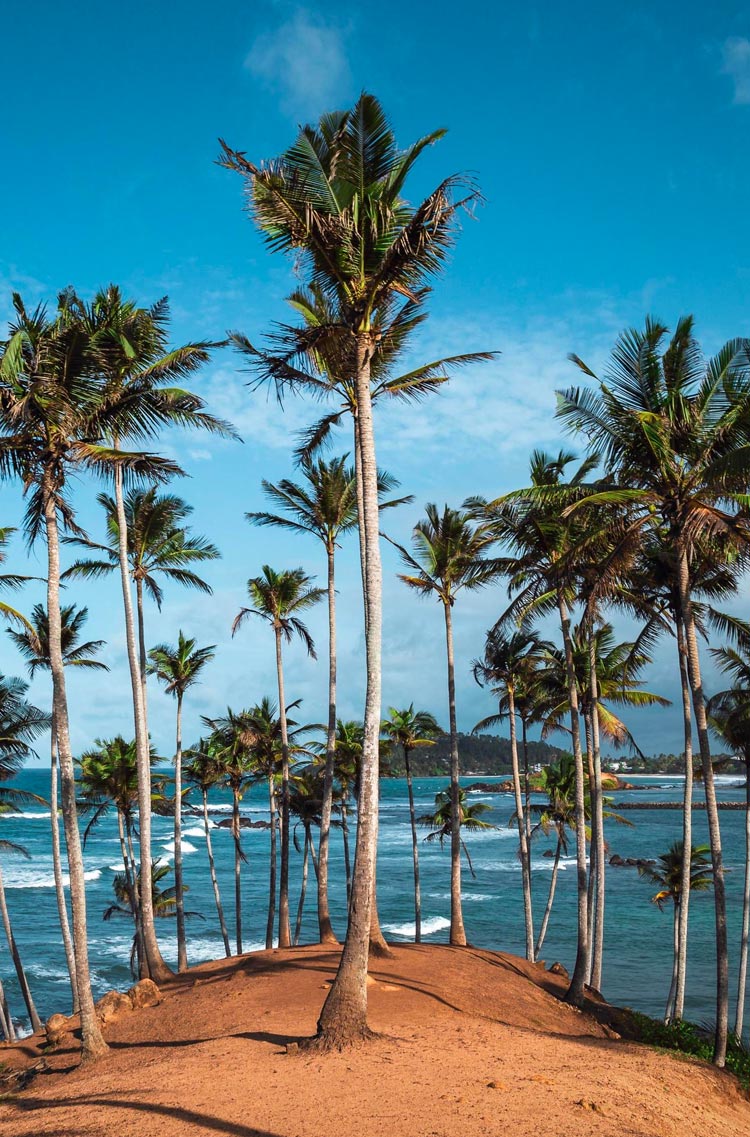
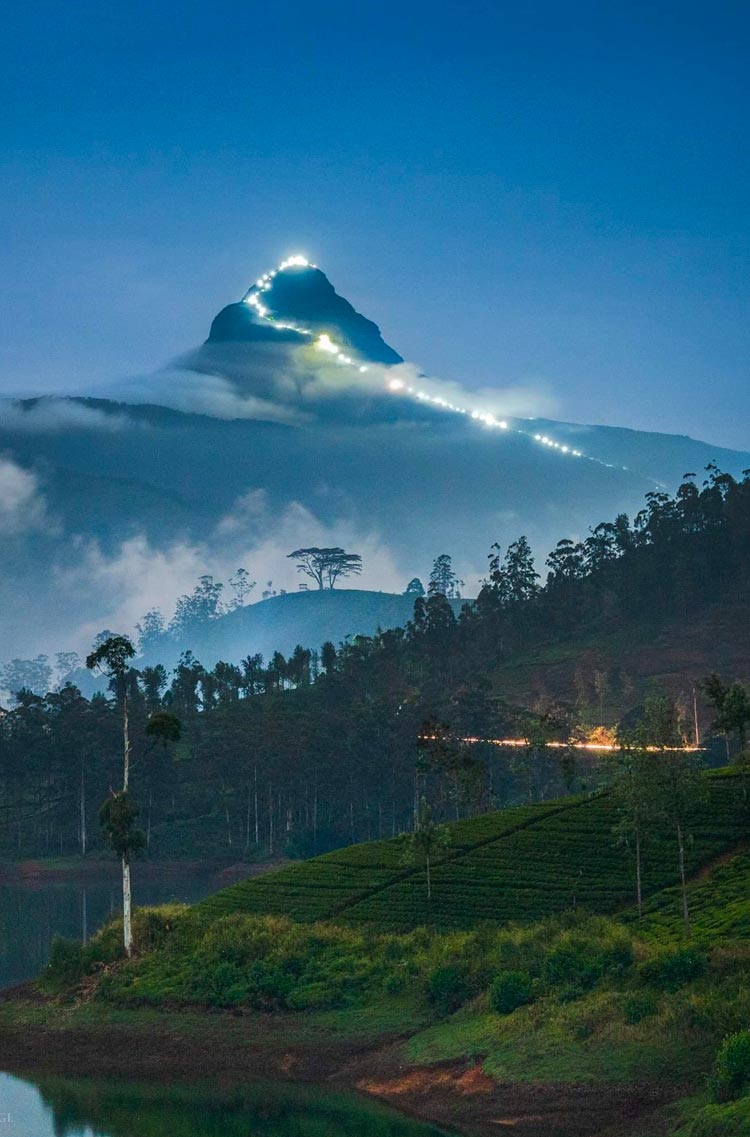
Adam’s Peak
Whether it is Adam’s Peak (the place where Adam first set foot on Earth after being cast out of heaven), Sri Pada (sacred footprint), or Samanala Kande (Butterfly mountain, where butterflies go to die), Adam’s Peak is a beautiful and fascinating place.
Not all faiths believe the huge footprint on the top of the 2,224 m peak to be that of Adam — some claim it belongs to the Buddha, St Thomas the early apostle of India or even Lord Shiva. Whichever legend you choose to believe the fact remains that this sacred mountain has been a pilgrimage centre for over 1,000 years.
Today the pilgrimage season starts on Poya day (full moon day) in December and runs through to April — the beginning of the southwest monsoon. At other times of the year it is not possible to climb. The night walk is the best way to maximise your time on Adam’s Peak, arriving in time for sunrise the views are simply breathtaking, with the hill country rising to the east, while to the west the land gently slopes toward the Indian Ocean. Shortly after dawn keep an eye out for the vast shadow of the mountain cast against the sky, most impressive.
Sri Lanka’s Central Highlands, in which Adam’s Peak stands, was declared a UNESCO World Heritage Site in July 2010 to protect the montane forests which are home to an extraordinary range of flora and fauna, including several endangered species such as the western-purple-faced langur, and the Sri Lankan leopard. The region is considered a super biodiversity hotspot.
Little Adam’s Peak
Named after its resemblance to the iconic Adam’s Peak/Sri Pada, Little Adam’s Peak is its smaller brother and a must-visit when in Ella. The hike to the top of Little Adam’s Peak is fairly easy; the peak is 1141m high, so it is more of a two-hour-long leisurely walk. It is also incredibly easy to find the path to Little Adam’s Peak since it is clearly marked.
The hike begins on relatively flat ground and it is quite picturesque as you’re surrounded by tea bushes, and the higher you go, the steeper the trail, so it’s best advised to wear a pair of walking shoes. Despite the minimal effort needed for the trek, the view from the top is truly magnificent, as you overlook a deep valley and its surrounding hills – leaving you breathless.
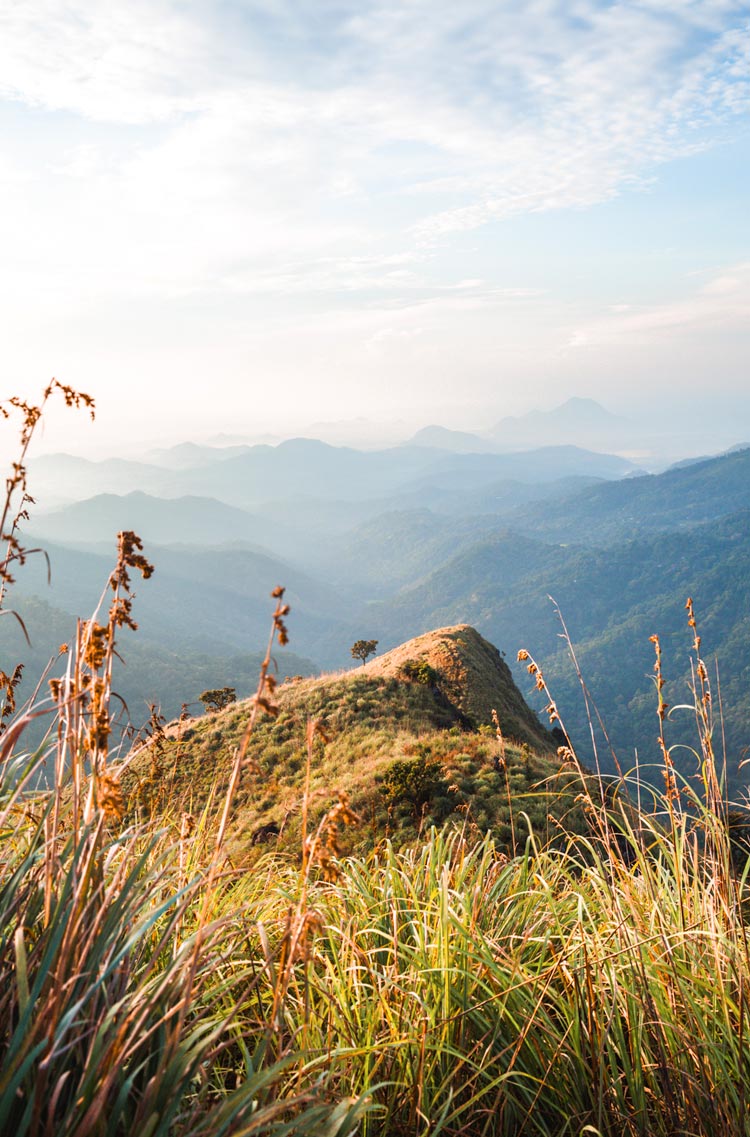
OFFERING UNPARALLELED VIEWS
Breathtaking Adventure
Embark on a breathtaking adventure in Sri Lanka, where the iconic Sigiriya Rock Fortress beckons with its ancient splendor. Soar high above the lush landscapes in a thrilling hot air balloon ride, and experience the adrenaline rush of the Flying Ravana Mega Zipline, offering unparalleled views of this tropical paradise.
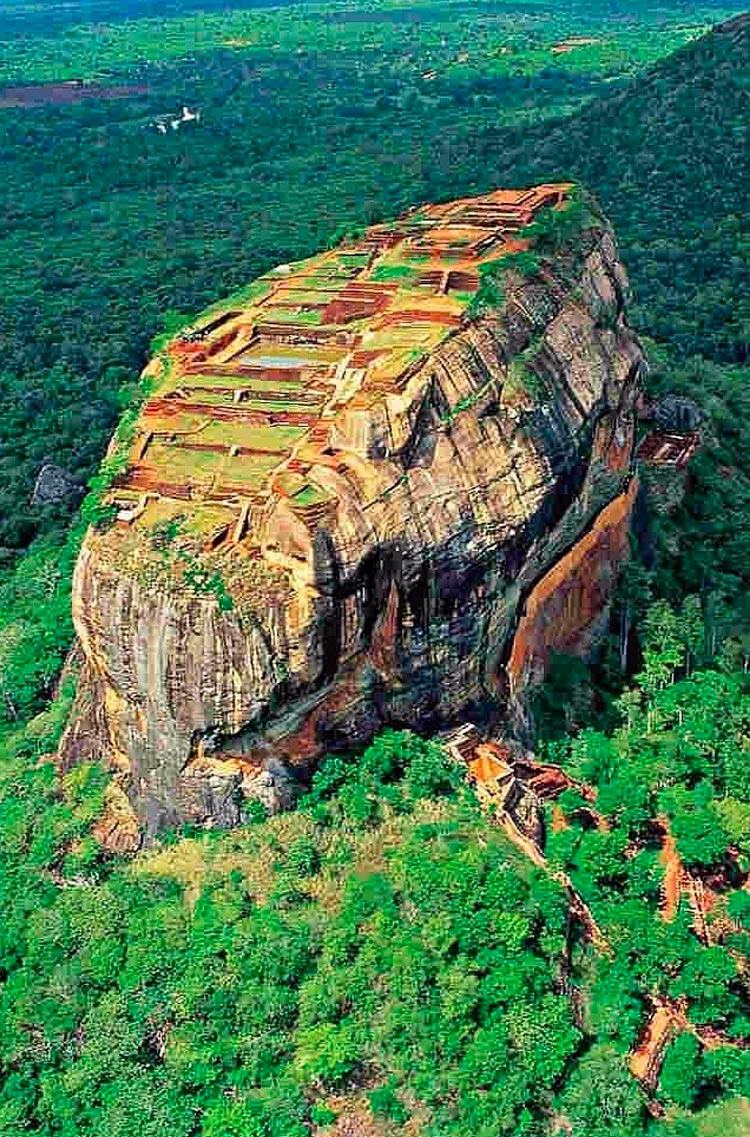
Sigiriya Rock Fortress
Sigiriya is a fifth century fortress in Sri Lanka which has been carved out of a hard volcanic rock. It towers around 600 feet (182.8m) from the forest and gardens below, and has a flat top. This is where the palace of King Kasyapa once stood, reachable up a winding stone staircase. Today, you can climb the 1270 steps to see the well preserved ruins of Sigiriya, a UNESCO heritage site known as the eighth wonder of the world.
Set off early, before the sun gets too hot and the crowds arrive. At the base of the rock, you’ll pass through a series of beautifully manicured gardens. There are the water gardens, complete with fountains and ponds where people used to bathe. Then there are the boulder gardens, named for the large rocks scattered across the sun-dappled grass – they were once the foundations of an ancient monastery, built around the third century BC. But despite the beauty of the gardens, your eyes will be perpetually drawn back to the looming silhouette of Sigiriya itself.
Close to the top of the fortress, you’ll come across Lion’s Gate; a staircase with two huge stone lion paws on either side. There was once a lion’s face hewn into the rock as well, but it’s been eroded by the elements. This is how Sigiriya – which translates as ‘lion rock’ – got its name. Continue walking, and soon you’ll be at the top. This is where the palace once stood; you can still see the terraced palace gardens, and ancient walls and fortifications. The view over the surrounding jungle is incredible.
Hot Air Ballooning
This adventure is becoming popular in Sri Lanka, with a number of private organizations offering flights that will take you over the cultural triangle. This is a wonderful experience to engage in while you visit Sigiriya.
Step into the balloon basket and feel yourself slowly rise over the treetops, until you can see the magnificent vistas of the central plains of the island. You will sail over forests, lakes, paddy fields, wildlife parks and ancient monuments on your balloon ride. See the Sigiriya rock towering over its surroundings, catch a glimpse of elephant herds freely roaming the open plains or gathering at watering holes, wave to the village children who will excitedly try to keep up with the balloon on foot. Hot air ballooning is a delightful way to view and experience the natural beauty of the resplendent isle of Sri Lanka.
The experience has also become popular for proposals and celebrations such as birthdays. As the balloon flight is dependent on good weather, this experience is only available during certain months of the year,
generally November to April.
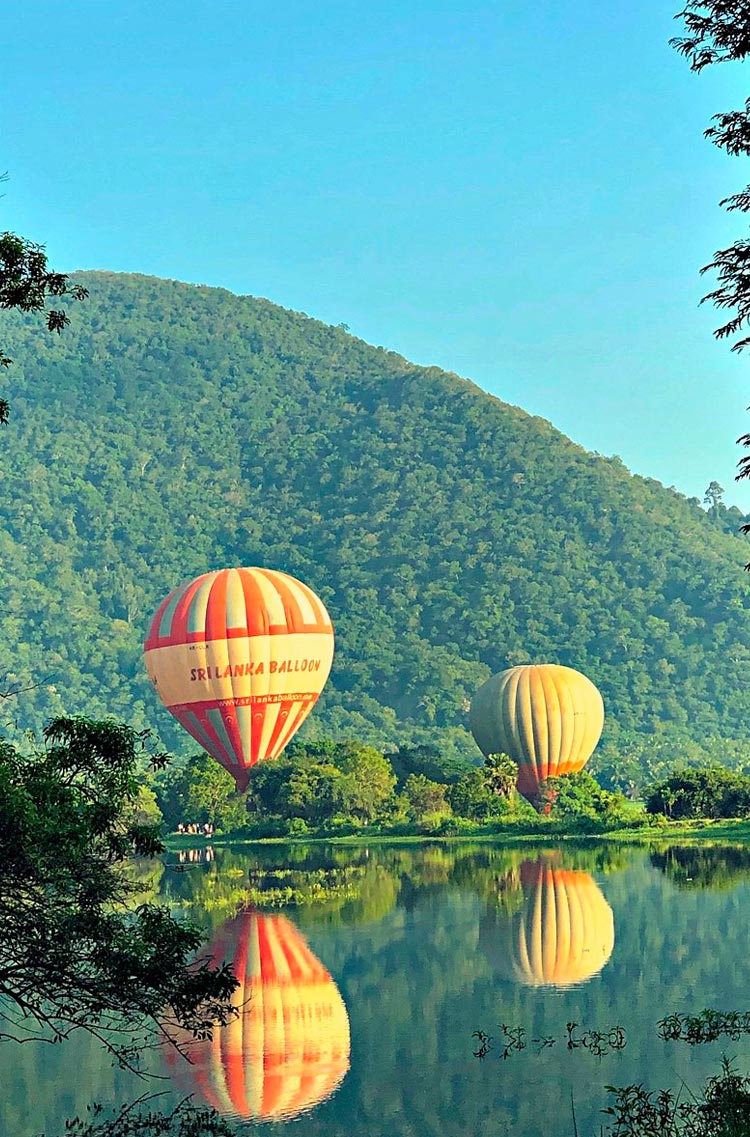
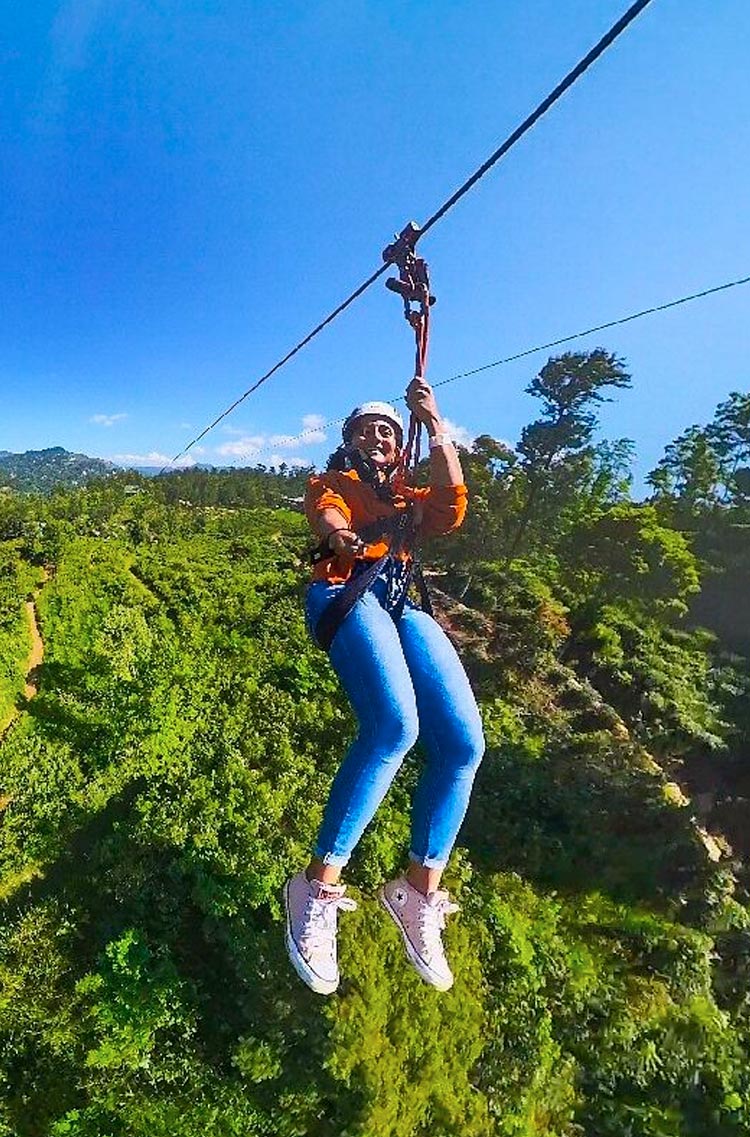
Flying Ravana- Mega Zipline
Thrill seekers visiting Ella should not miss out on this exciting zipline by Flying Ravana. It is the first zipline in Sri Lanka, and the experience it offers is undoubtedly impressive. During the ride spanning more than half a kilometer and 82m high, you will fly at a speed of 80kmph and get a bird’s-eye view of the stunning landscapes.
Admire the lush and breathtaking greenery as you soar at an exciting pace. With all the equipment included in this experience, you can rest assured that you will be safe throughout.
CREATING LASTING MEMORIES
Experience Sri Lanka
Experience Sri Lanka’s rich culture through cooking classes, where you’ll learn to prepare authentic local dishes. Immerse yourself in the country’s artistic heritage with hands-on arts and crafts workshops. Then, embark on a breathtaking scenic train ride, winding through lush landscapes and picturesque vistas, creating lasting memories of this vibrant island nation.
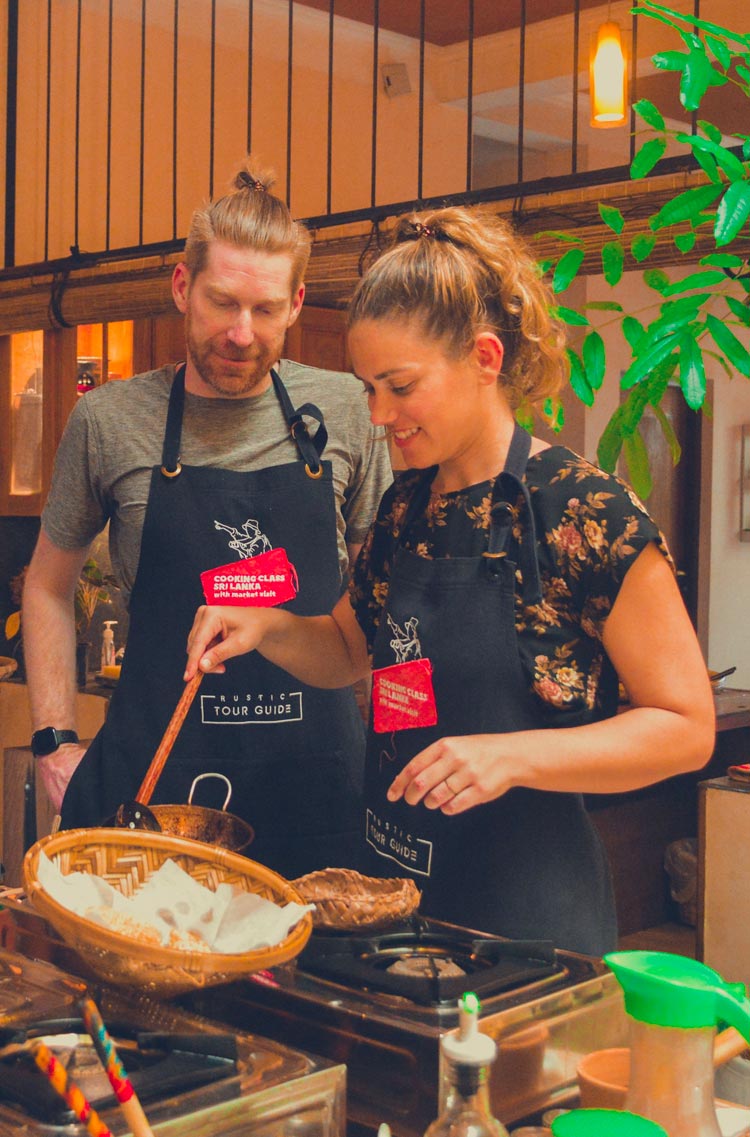
Cooking classes
A fantastic programme giving you the opportunity to learn to cook the wonderful, unique, varied and extremely healthy cuisine of Sri Lanka. The lessons we organise comes from a highly experienced home cooks, and can be conducted at numerous locations around Sri Lanka based on your itinerary. Cooking classes will not only give you the knowledge to recreate the classic Sri Lankan dishes, but is also an experience of real, traditional Sri Lankan hospitality with all its warmth and fun.
The class will take you through the spices used in Sri Lankan food and general preparation techniques. You will take home a good appreciation of the basics of cooking Sri Lankan food as well as the ability to prepare a few dishes to an excellent standard.
Some of the smaller hotels in the country will also offer ad-hoc cooking lessons and let you get busy in the kitchen alongside the staff. We can suggest places for this if you would rather not book the proper lesson.
Arts and Crafts
The story of Sri Lanka’s arts and crafts comes from within one of the oldest civilizations in the world. It dates back to thousands of years and is firmly rooted in authentic culture. Its colours, sounds, rhythm, and shapes run through the course of history. From the art of puppetry to drum-making, the island’s artistic flair never fails to amaze those who encounter it. Sri Lankan art history that emerged with the introduction of Buddhism to Sri Lanka is the most dominant.
From cave paintings to rock sculptures, the ancient kingdoms of the nation provide stunning evidence of skillful artistry from bygone eras. Sigiriya frescoes, Dambulla cave paintings and sculptures, and stone carvings of Anuradhapura and Polonnaruwa have earned their reputation worldwide. The Kandyan dancers, the folklore masks, handloom fabric, Beeralu lace making, and lacquer work in Sri Lanka are unique to the island. Sri Lanka also holds one of the most popular literature events – the Galle literary festival.
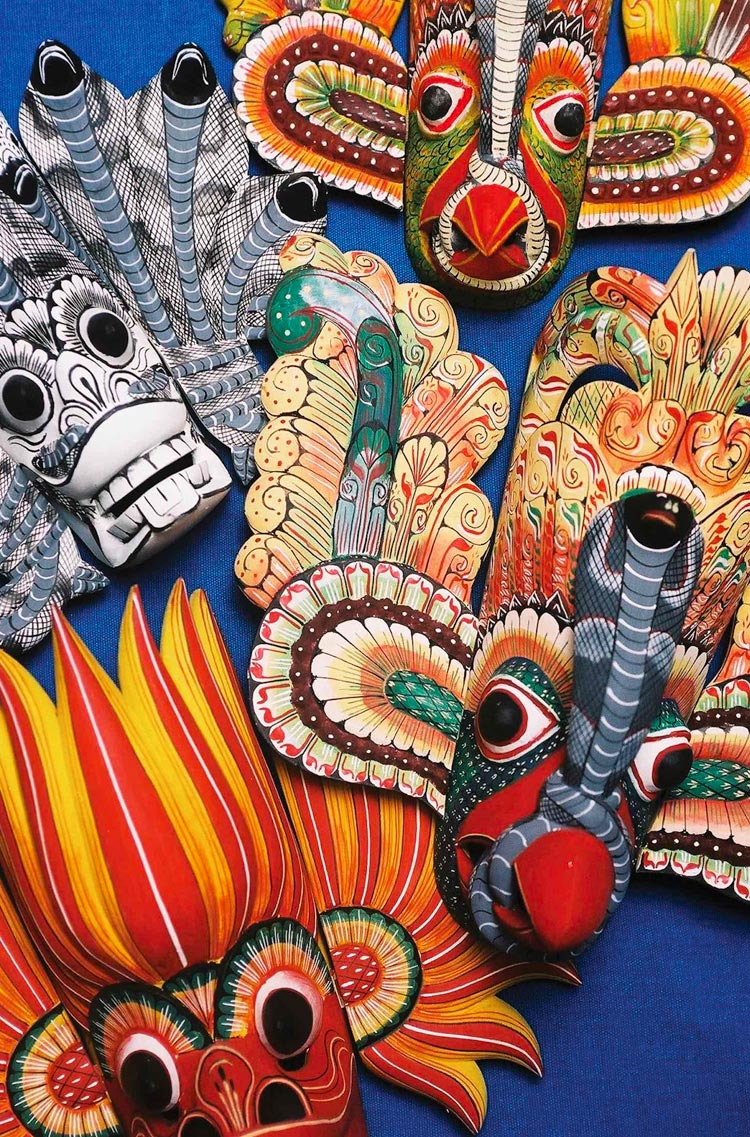
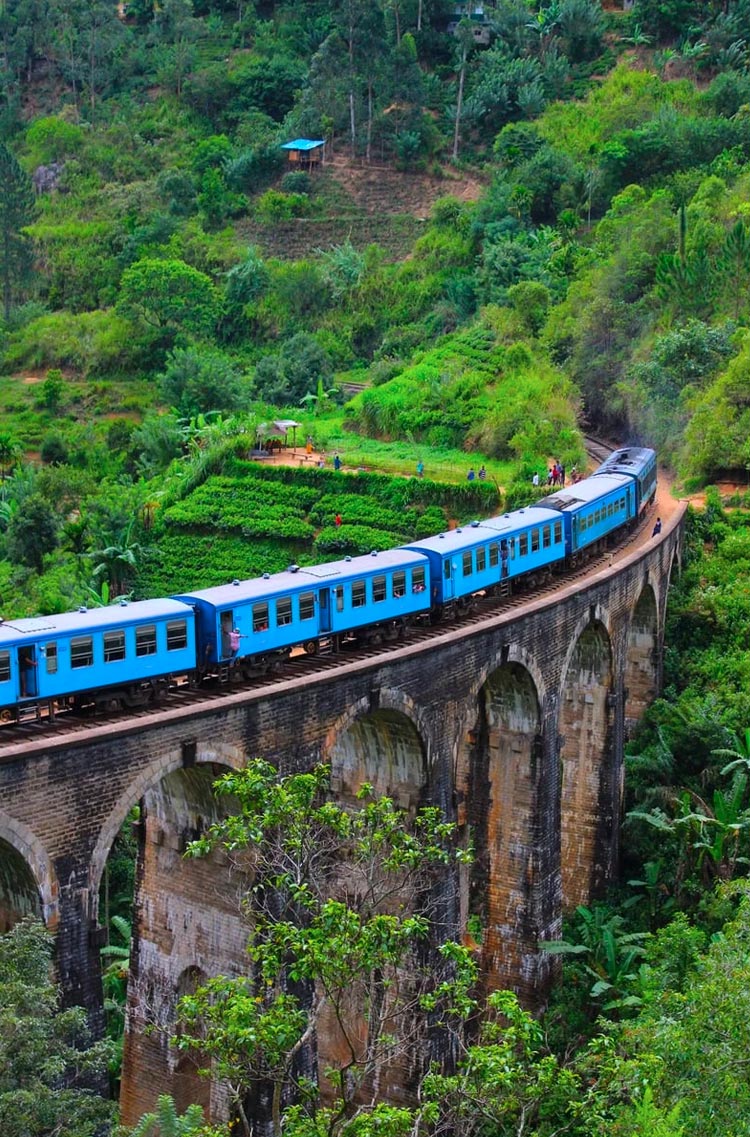
Scenic Train Ride
In the heart of Sri Lanka, you’ll find one of the world’s most scenic train trips. The train from Kandy to Ella is a beautiful 7-hour ride through lush tea plantations, rolling rice fields, and endless mountain views. Originally built in 1864 by the colonial British to transport tea from the hills to the capital city, the railway has since become a super affordable way to see the picturesque countryside. Today, the 94-mile train ride is the highlight of any visit to Sri Lanka.
One of many unforgettable things about the scenery is the intensity and variety of the color green. Everything is green and lush, and much of the region is carpeted with the glowing green of the tea plantations. Tea needs a warm climate, altitude and sloping terrain to grow—a perfect description of the Hill Country—and today the region is virtually one big tea plantation.
